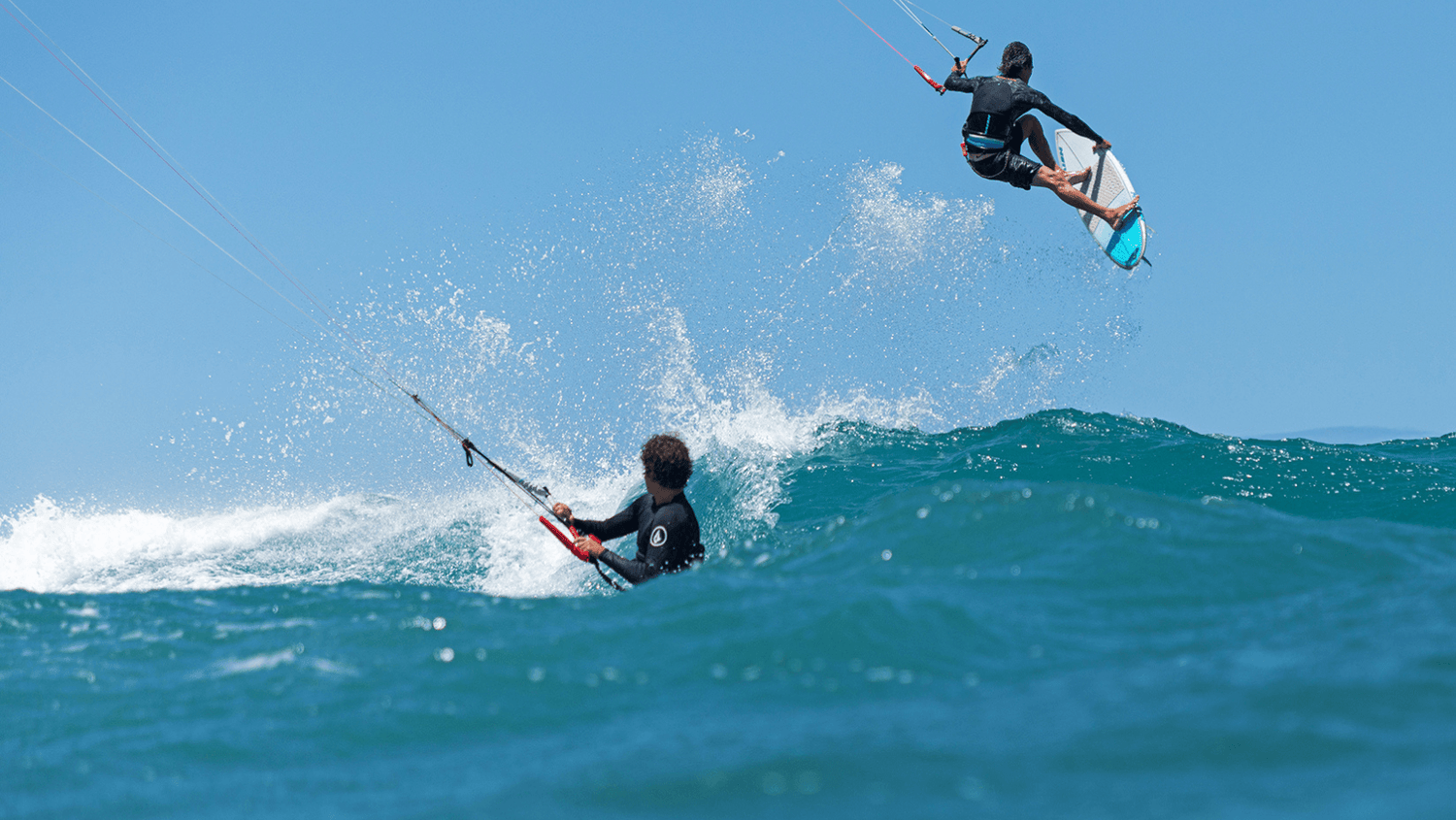
Kitesurfing Fundamentals: Mastering the Wave
For many riders, a proper wave session is the epitome of our sport. Combining the power of the wind, the kite, the board, and the wave will spit you into a euphoric state and leave you wanting more. Like many things, it’s all about timing and conditions. There are a lot of things that need to come together for a good wave session. Here are a few things to consider to give you the best odds of an epic session.

Learn and understand the spot you’re sessioning. Don’t just grab your gear and charge out. Observe where the waves are breaking, whether or not there’s a current you need to look out for and wait for the set to finish before heading out. Waves will break where it’s most shallow. Once the wave has broken, the water will flow together and often affect the wind speed that your kite is feeling. Look out for this on the back of a freshly broken wave.
Consider wind direction and getting past the whitewater. More often than not, good wave conditions are found in side shore or offshore wind spots. Getting out over the white water can be an obstacle. Speed matters and you don’t want to be sitting in the whitewater trying to sort out how to keep the board on your feet. When you’re going out through the waves, focus on zig-zagging your way out. You don’t want to hit whitewater straight on, going full speed. It’s better to take things at more of an angle. Approaching the whitewater with your kite high and sheeted out will give you that extra lift you need to float over the smaller, braking waves.

The kite is your friend. It’s your biggest tool for getting out of sticky situations and getting into good ones. Learn to steer your kite properly. The right position and kite movements are crucial when riding waves. When you’re on a wave, use your kite to pull you out of a section and onto the face of the wave. In off and side-off conditions, keep your kite stable at 45 degrees. Follow the kite downwind while doing your bottom turn. To prevent the kite from dropping, bring it up before you go for your bottom turn and move it back down before you start your top turn. This will allow the kite to generate lots of power through the bottom turn and pull you forward into the wave while doing the top turn.
Focus on your stance. The beauty of a surfboard is that it’s got softer rails, not those hard twin-tip rails. This also means you’re going to be riding a surfboard a lot differently than a twin tip. When riding a twin-tip, your weight is more focused on the back of the board. A surfboard has a lot more volume, more rail shape, and a lot more room for variation in terms of stance. When you’re not doing aggressive turns, you can stand a bit further forward on the board. Think about bringing your back foot forward, as this will be most impactful in shifting your weight.
Think about your gear! Naish offers a wide range of wave riding tools that will help you reach your full potential in the waves. Contact our team if you have any questions about the gear. We're happy to help you.


